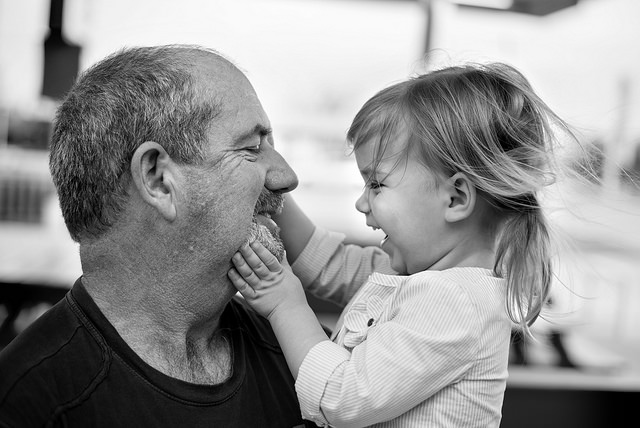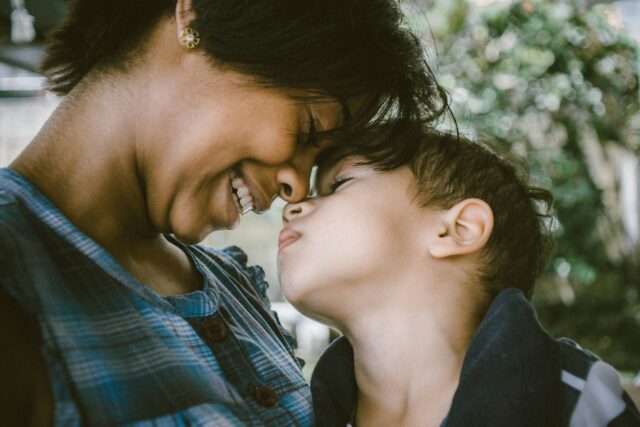How to be a “Whole-Brain” Parent as Your Child’s Brain Develops
By: Other | May 11, 2018

Written by Anke Reineke, Ph.D.
What’s going on when your child throws a tantrum in the middle of a store? Why sometimes does your preschooler refuse to eat breakfast or get dressed? No logical reason seems to exist when these things happen. As a parent, your diligent efforts to calm your child may be met with nothing but further explosions. Why? Do children conspire to make their parents’ lives endlessly challenging? A possible explanation for such behavior is that a child’s developing brain may not be fully developed. This is normal.
Research shows that children’s brains do not completely develop until their early twenties. Therefore, we should not expect children to handle situations as an adult would. That is not to say that parents cannot help in the development of their children’s brains and self-control skills. They can and do.
As a psychologist working with parents and as a parent myself, I have recommended the book entitled The Whole Brain Child, written by neuropsychiatrist, Daniel J. Siegel, M.D., and psychotherapist, Tina Payne Bryson, Ph.D. The goal of the book is to teach parents how to soothe their children’s distress, allowing the kids to be more receptive to learning. The book then shows parents how to guide and teach in that quiet, receptive moment. I have used this book many times and have seen immediate results in children.
Integration, or connecting the parts and functions of the brain to achieve well-being, is the key concept of the guidelines described in the book. The two sides of our brains are different. The left side likes lists, sequences, logic, language, rules, and order. The right side pays attention to nonverbal signals, emotions, images, creativity, and is more connected to the lower brain area that receives, understands, and processes emotional information. The two sides are connected by a bundle of fibers needed for the two sides to work together, to be integrated.
Young kids, however, operate more from their right brains because their brains haven’t completely developed. Remember, their brains are still “under construction” until adulthood. It’s our role to help them use both sides of their brains. These two strategies — integrating the parts and encouraging use of both parts — can be used with any child of any age. To do this, I would like to share three of the book’s twelve guidelines with you.
Connect and Redirect
When children are upset and flooded with emotion, their right brains are completely in control. It does no good to use logic or reasoning with children in this state. The first thing an adult should do instead is to connect with the child’s right brain by validating their emotions and listening without judgment, all with a sympathetic touch. Once this is done, a child can calm down enough for a parent to redirect their thinking and reasoning about their behavior.
Name It to Tame It
Too often we dismiss and deny the emotional importance of life’s difficult experiences. We try to talk kids out of their feelings. We avoid painful issues. Instead, pick a time when you and your child feel calm. Conduct a story-telling conversation about the difficult event. This strategy helps integrate both sides of the brain, that is, the left brain tells the story of the right brain’s strong emotion.
The Whole Brain Child book further describes integration by thinking of the brain as a two-story house. The “downstairs brain” develops early and is responsible for bodily functions like breathing, as well as for strong emotional reactions like fight, flight, and freeze. The “upstairs brain” develops later in childhood and on into adulthood. It’s the place where the more mental processes happen — good decisions, emotional and bodily control, empathy, and a sense of right and wrong. The following guideline from the book helps to build the connections to the upstairs brain.
Engage, Not Enrage
Making children act a certain way when operating at a downstairs level often leads them to greater anger. Compromise and problem solving can help them to engage the upstairs brain. Help the child to calm down or wait until they do before attempting to rationalize with them. Make sure you have connected with your child as described above. Once they are calm, help them find solutions to their challenges.
Being a “whole-brain parent” and using some of the strategies described in The Whole Brain Child can serve as useful guides in developing a positive relationship with your children. Such useful tools can turn frustrating situations into learning opportunities for encouraging healthy growth and development.
Image: Donnie Ray Jones on flickr and reproduced under Creative Commons 2.0



